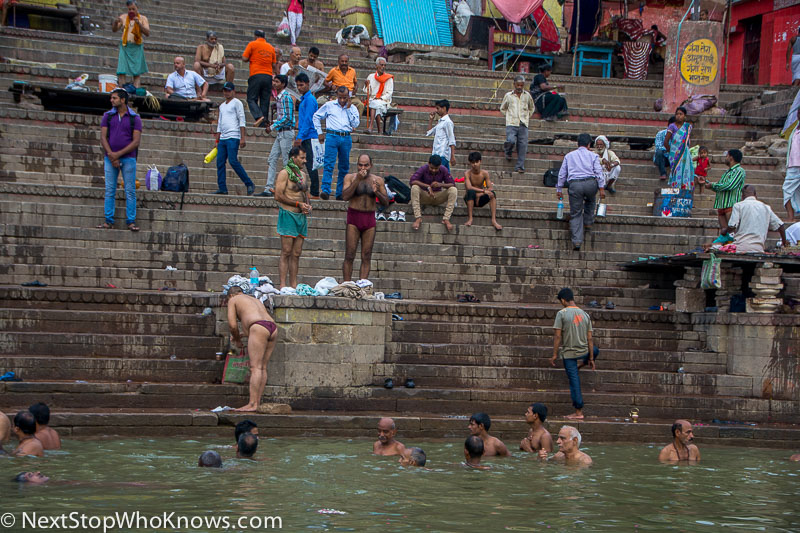In the north of India, on the west bank of the sacred river Ganges and 360km away from the Nepali border, stands the holiest city of Hinduism: Varanasi.
According to legend, Varanasi, also called Kashi or Benares, was founded 4,000 years ago by Lord Shiva, mighty god of Hinduism, and quickly became the capital of all knowledge. Famous for its long line of scholars, poets and skilled musicians, the city also witnessed Buddha’s first sermon and the birth of Sikhism.

For the Hindus, Varanasi is synonymous with Moksha, or liberation from the life and death cycle, an equivalent to the Nirvana in Buddhism. They believe that dying in the city of Shiva, and being burnt on the bank of the Ganges will finally break the Samsara.
The Burning of Bodies in Varanasi at the Ghats…
People from all walks of life, young and old, rich and poor come to Varanasi to die. The funeral rite called Antyesti or last sacrifice, takes the mourning family carrying the dead body through the streets of the city and to the bank of the river.
There, on one of the numerous ghats, a flight of stairs leading to holy water, the deceased is bathed in the river, shaved, wrapped in a sari then delicately installed on the pyre. Finally, the eldest son, brother or uncle of the deceased sets the pyre ablaze. The cremation usually takes approximately 3 hours.
There is a whole economy behind the burning of bodies in Varanasi. Each pyre is built with at least 200kg of wood, amounting to 50,000 rupees (€689) on average, which is a king’s ransom for most Indian families.
For most Indians, the only way to give a decent funeral to their beloved relative is to negotiate with the Doms.
The Doms, a very old family from the Untouchable caste, took over the ghats of Varanasi centuries ago and they enjoy a real monopoly on the cremation business. They are in charge of the pyres and fix their prices according to the wealth and caste of the deceased. The poor can pay with a cow or anything of value they possess or produce.
For the rich, the price can amount to thousands of Euros. Often, there is not enough money in the family to pay for good wood, and whole pieces of bodies often have to be pushed into the Ganges when the fire dies down.
Decades ago there were days without cremation in Varanasi but this has changed. Nowadays, 200 to 300 cremations take place every day on the ghats. Burning pyres can be seen around the clock, setting ablaze the banks of the river at night.
Sadly, the search for Moksha takes its toll on the environment with thousands of tones of wood being cut and burnt every year, not to mention the constant smoke and the tons of ashes being sent into the Ganges.
A few years ago, the city built a modern crematorium on one of the ghats. The electrical cremation only cost a small fraction of the open air one, and is far gentler on the environment, but nobody wants to take a chance with the rite, and the crematorium remains unused.
The pyres will keep burning on the Manikarnika and the other ghats of the city for the foreseeable. At night, when the flames illuminate the river and the shadows of the Doms can be seen teasing the fires, it is easy to see why Varanasi is seen as the city of eternal fire.
Varanasi is definitely one of the most fascinating places that we’ve ever been. Sitting on the bench watching bodies being prepared for cremation while mourning families gather around and the Doms poke the already burning pyres certainly leaves a lasting impression.
Once we got over the shock of seeing bodies burning in front of our eyes, we found Varanasi to be a truly cultural city that we’ll undoubtedly talk about for years to come. Do not miss it when in India.
Have you ever visited Varanasi? Would love to know your thoughts on it if you were.
















Such an awesome content…. Really loved the way you have portrayed about the place… Could see pictures and imagine stories of what happened at that place at that particular time… Awesome work sir…. Keep going💯❤